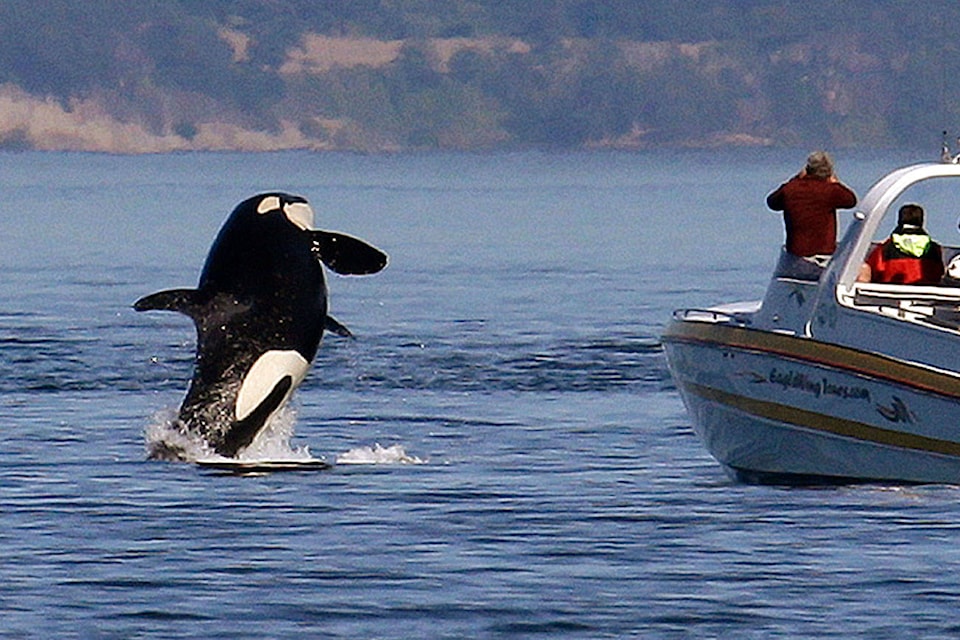Fisheries Minister Dominic LeBlanc announced regulations to keep boats at least 200 metres away from whales, up from the 100 metre guideline currently in place. Boat noise is considered a major threat to whales, as it is in the same frequency range as echolocation, which interferes with their ability to find food.
In a press conference from Ottawa, LeBlanc said that “We heard loudly and clearly from scientists and experts that they want the government to move quickly and to do absolutely everything it can and must do to ensure not only the protection of these iconic species but their recovery as well.”
LeBlanc is asking whale-watching operators to voluntarily keep a minimum of 200 metres away until the new regulations are fully implemented. In an email to the Peninsula News Review, Ben Duthie of Prince of Whales Whale Watching wrote that the news only reached his desk late Thursday afternoon.
“The Executive of the Pacific Whale Watching Association (PWWA) has scheduled a meeting this [Friday] afternoon to discuss the finer details of the announcement,” wrote Duthie. PWWA is an organization that represents 32 whale watching and eco-tourism businesses in the region. Duthie wrote that the group would have a formal statement after this meeting.
This announcement is partly designed to restore the southern resident killer whales (SRKW) in the Salish Sea, which currently number at around 78. Their numbers were originally decimated by aquariums looking for docile orcas in the 1970s, and their population has not recovered to pre-capture levels.
This announcement is strongly supported by the Raincoast Foundation, which released a study yesterday suggesting that there is a 25 per cent chance of extinction for the southern resident killer whales over the next 100 years. However, they estimate that if boat noise were reduced by 50 per cent, and if chinook salmon levels increased by 15 per cent, the orca population would hit a growth target of 2.3 per cent per year. Right now, the population is stagnant.
The SRKW population is well-studied, but Paul Paquet, lead researcher on the study, told the Peninsula News Review that this study is the first to consider how different threats amplify one other, rather than just evaluating the effect of a single threat. It also projects how raising or lowering a threat might change population numbers.



